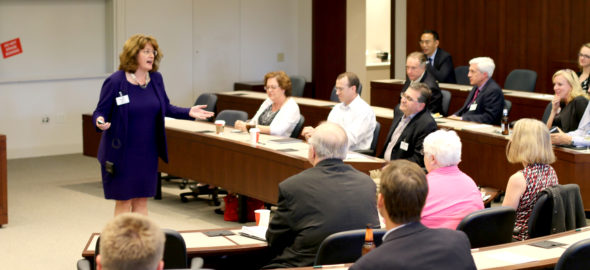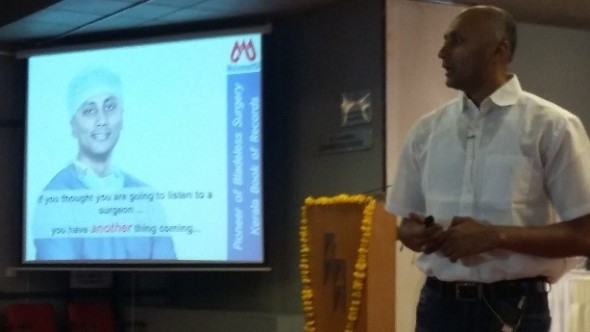The Problem: The nursing home market is facing unprecedented growth as the 76 million baby boomers across the United States start to enter retirement. Surprisingly, the majority of these facilities have not sufficiently modernized to meet the challenges brought on by this newfound demand. Specifically, over 50% of nursing homes still use a paper-based system to manage the care of their patients and store their health records. Meanwhile many of those who have switched to an electronic system are tied down by un-intuitive programs with bulky and expensive in-house servers run by companies whose customer service often parallels that of the heavily maligned cable industry.
A Solution: In 2012 BlueStrata EHR was founded as a cloud-based solution to this dire problem. BlueStrata’s digital SaaS (Software as a Service)-model system allows nursing homes to dump their paper systems and expensive servers. The platform enables homes to conveniently access their patient records, medication information, and reporting from anywhere and was built from the ground up with an easy to use interface for nurses and other home employees. Most significantly, BlueStrata is dedicated to delivering best-in-class customer service with on-site on-boarding and implementation, a 24/7 live client support desk, and an online suite of webinars and informational documentation.
The Consultants’ Challenge: Despite BlueStrata’s numerous benefits, marketing and sales dollars are limited. In order to determine how the firm can most efficiently utilize their resources to most effectively reach the largest amount of potential customers, the company has enrolled our help. We are a team of multidisciplinary graduate students from the CELect course at Washington University in St. Louis. CELect is a unique class where students perform consulting projects for start-ups in the St. Louis area as a method of experiential learning while also giving back to the community.
Our group – Robert Bailen, Rachael Lin, Michael Foland, and Tarun Sengar, are working directly with Tony Coco, BlueStrata’s president, to help advise on how to best leverage the benefits of their ERP (enterprise resource planning) platform in a targeted multi-media marketing campaign. Working alongside Mr. Coco and the BlueStrata team has been a great opportunity for us thus far. We have not only been able to witness first-hand how BlueStrata helps homes manage their workflow, but also how they save homes significant amounts of money through increased insurance reimbursements and reduction of human error.
BlueStrata is one of the recent success stories of St. Louis’ burgeoning entrepreneurship scene, which has been driven in large part due to Mr. Coco’s leadership. Mr. Coco was the former director of marketing services and brand management for Victor Technologies, a cutting and welding equipment provider. Victor Technologies was acquired in 2014 by the Maryland-based industrial firm Colfax Corp for $947 million. BlueStrata, meanwhile, raised $1.66 million from the life science fund of St. Louis venture capital firm Cultivation Capital in August 2015. They’re continuing to grow at a rapid pace and just recently moved into new offices in Creve Coeur to house their increasing number of employees as they continue on their path to help nursing homes nationwide.
Team: Robert Bailen, MBA; Rachael Lin, PMBA; Michael Foland,Law; Tarun Sengar, MBA







 The highlight of the evening was the presentation of the Distinguished Alumni Award to Gary Olson, HA ’76, who recently retired as Chief Executive Officer of St. Luke’s Hospital in St. Louis. Gary credited his degree from Washington University with giving him the opportunity to succeed in the field of healthcare.
The highlight of the evening was the presentation of the Distinguished Alumni Award to Gary Olson, HA ’76, who recently retired as Chief Executive Officer of St. Luke’s Hospital in St. Louis. Gary credited his degree from Washington University with giving him the opportunity to succeed in the field of healthcare.


 Dr. Jacob instituted new policy and operational changes by implementing a new management system which put employees first and customers second. Realizing that 80% of patient interaction is outside of his control (average direct doctor interface is 7 minutes), he developed a training program to ensure his staff were certified and cross-trained to handle every task that would arise.
Dr. Jacob instituted new policy and operational changes by implementing a new management system which put employees first and customers second. Realizing that 80% of patient interaction is outside of his control (average direct doctor interface is 7 minutes), he developed a training program to ensure his staff were certified and cross-trained to handle every task that would arise.